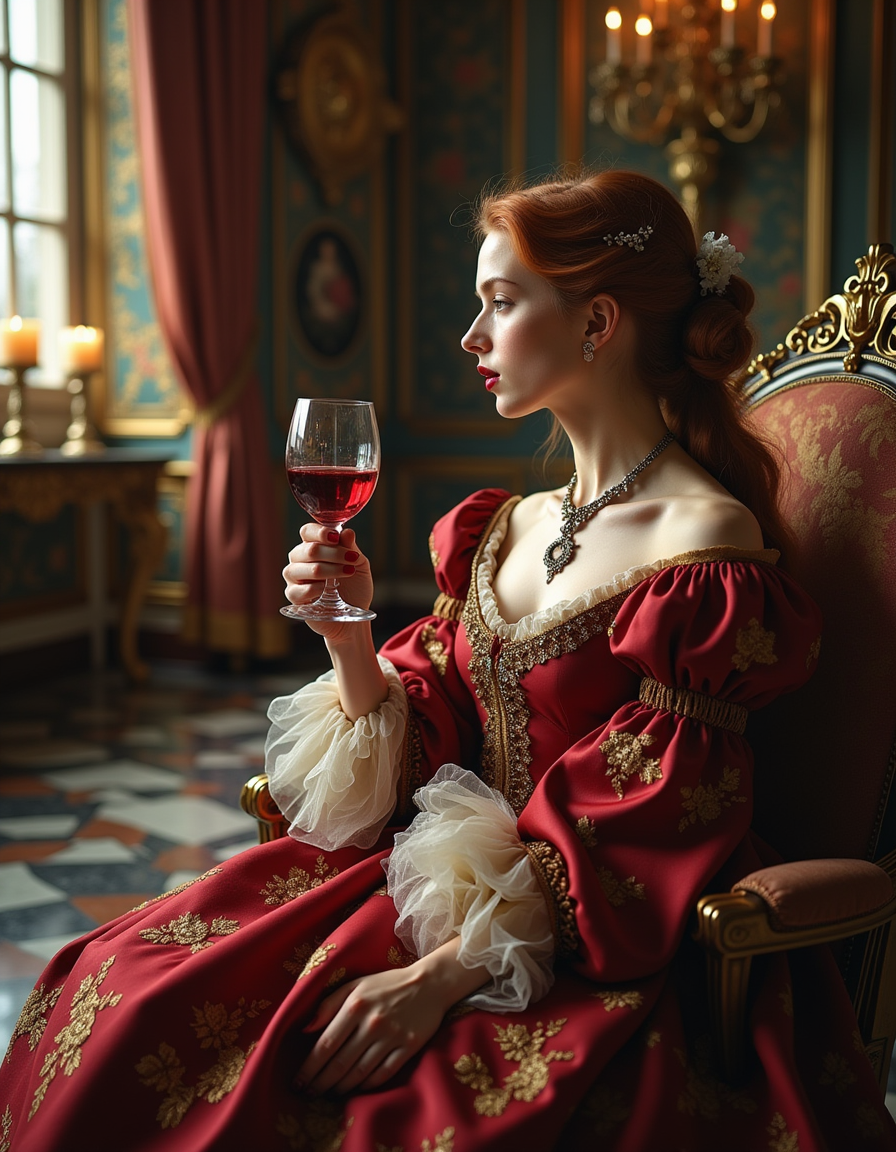In a grand and opulently decorated salon, illuminated by the soft flickering of candlelight, sits a proud French aristocrat woman, enveloped in her lavish, intricately designed gown. The dress, made from exquisite silk and adorned with delicate embroidery of golden flora, lavishly spreads around her, casting shadows on the marble floor. Her delicate fingers, painted with a deep crimson hue, delicately cradle a fine crystal wine glass, filled with a rich, ruby-red Bordeaux that glimmers invitingly. The scent of ripe berries wafts through the air as she takes a slow, measured sip, her expression a mix of pleasure and indifference to the world around her. In stark contrast, through the tall, ornate windows, the scene shifts dramatically. Beyond the glimmering chandeliers and intricate tapestries lies the grim reality of 17th-century European lifeâa shantytown inhabited by the desperate and destitute. Ragged children with dirt-smudged faces play in the dirt, their laughter mingling with the distant cries of a mother haggling for scraps of food at the market stall. The smell of smoke from a nearby cooking fire lingers heavily, blending with the dampness of the cobbled streets. This tableau evokes a tender yet poignant juxtaposition; the aristocrat is the embodiment of grace and luxury, blissfully unaware, or perhaps willfully ignoring, the plight unfolding just beyond her sheltered existence. With a delicate curl of her auburn hair framing her porcelain face, she gazes absently out of the window, the glint of her diamond-studded necklace catching the light, seemingly lost in thought, fully immersed in her own world of indulgence and privilege. <lora:oil_test3_flux:1> ggg

